The Colorful History of the BMW Art Car
The 20th BMW Art Car in 49 years made its debut in 2024.
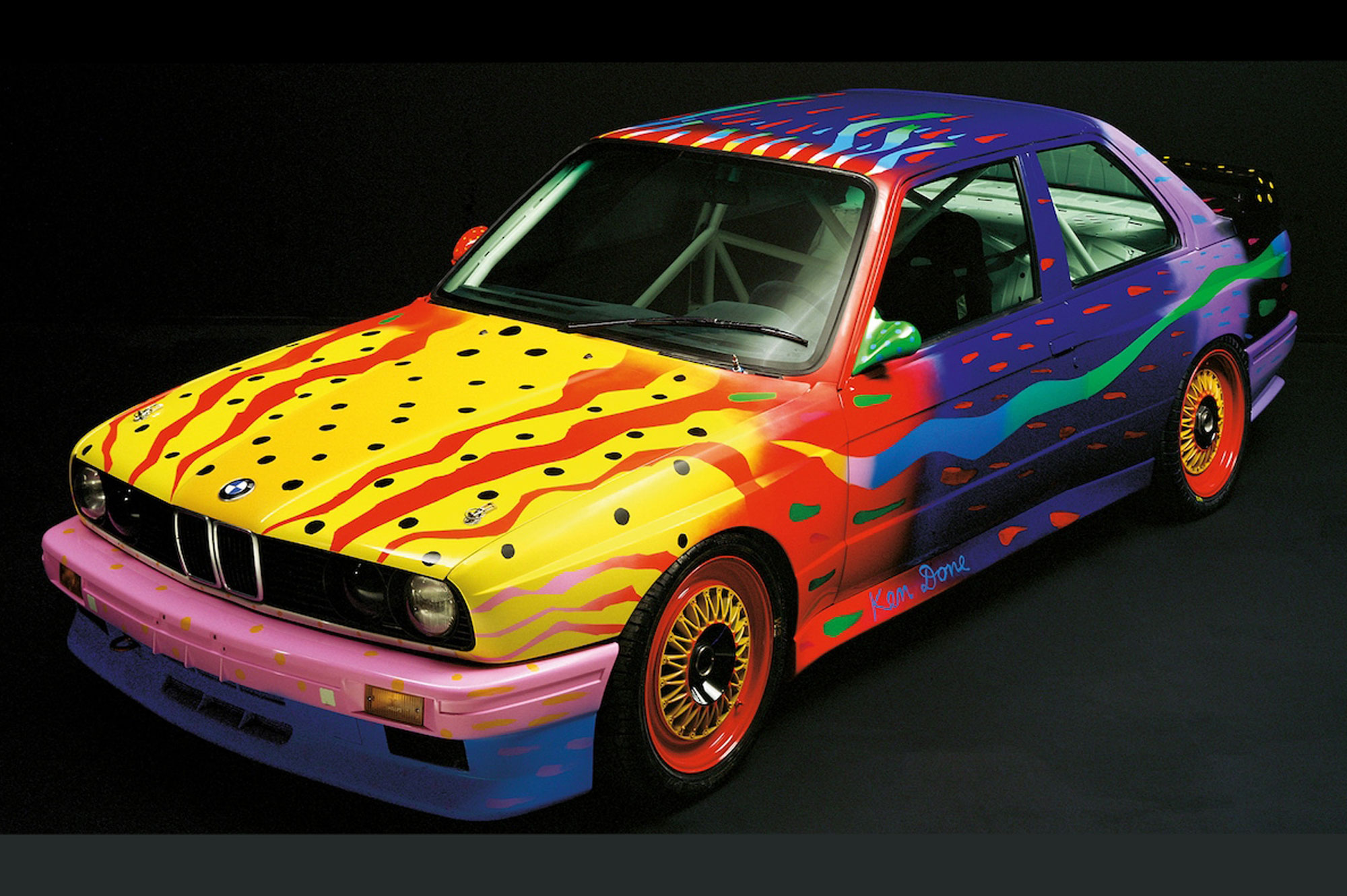 BMW
BMW
Celebrated by enthusiasts as one of the most distinctive liveries in racing, the BMW Art Car traces its roots to western France in 1975. Nearly 50 years later, BMW is about to release its 20th Art Car. Here's how it all began.
The Origins of the BMW Art Car
In the early 1970s, the cars that competed in major motorsport events such as the 24 Hours of Le Mans usually wore the colors of the team that campaigned them or the company that sponsored them. Factory-raced Ferrari models were often painted in red, for example, the national color of Italy.
Porsche began experimenting with unusual liveries when it sent a Martini Racing-sponsored 917/20 with pink paint and butcher's-cut graphics to the 1971 edition of the event. The car dropped out of the race after a crash, but its eye-catching livery earned it the nickname Pink Pig and cemented its spot in motorsport history.
Porsche sells a line of Pink Pig-inspired accessories more than 50 years after the car made its racing debut.
French pilot Hervé Poulain planned to compete in the 1975 24 Hours of Le Mans and wanted his BMW 3.0 CSL to stand out from the dozens of other cars on the starting grid. With the support of BMW Motorsport founder Jochen Neerpasch, he purchased a scale model of a 3.0 CSL and headed to the small French town of Saché to meet an American artist named Alexander Calder.
Calder agreed to take on the project to design the car's livery, and the 3.0 CSL was finished in time to participate in the daylong race.
Although the car dropped out due to a transmission problem, its livery generated a tremendous amount of publicity for BMW, Poulain, and Calder, starting a tradition that endures today.
BMW next asked American painter Frank Stella to design the second Art Car, a 3.0 CSL built for the 1976 edition of the 24 Hours of Le Mans. Andy Warhol created and painted the fourth Art Car, a 1979 M1. The series expanded outside of racing in 1982 when Ernst Fuchs worked on a regular-production 635 CSi.
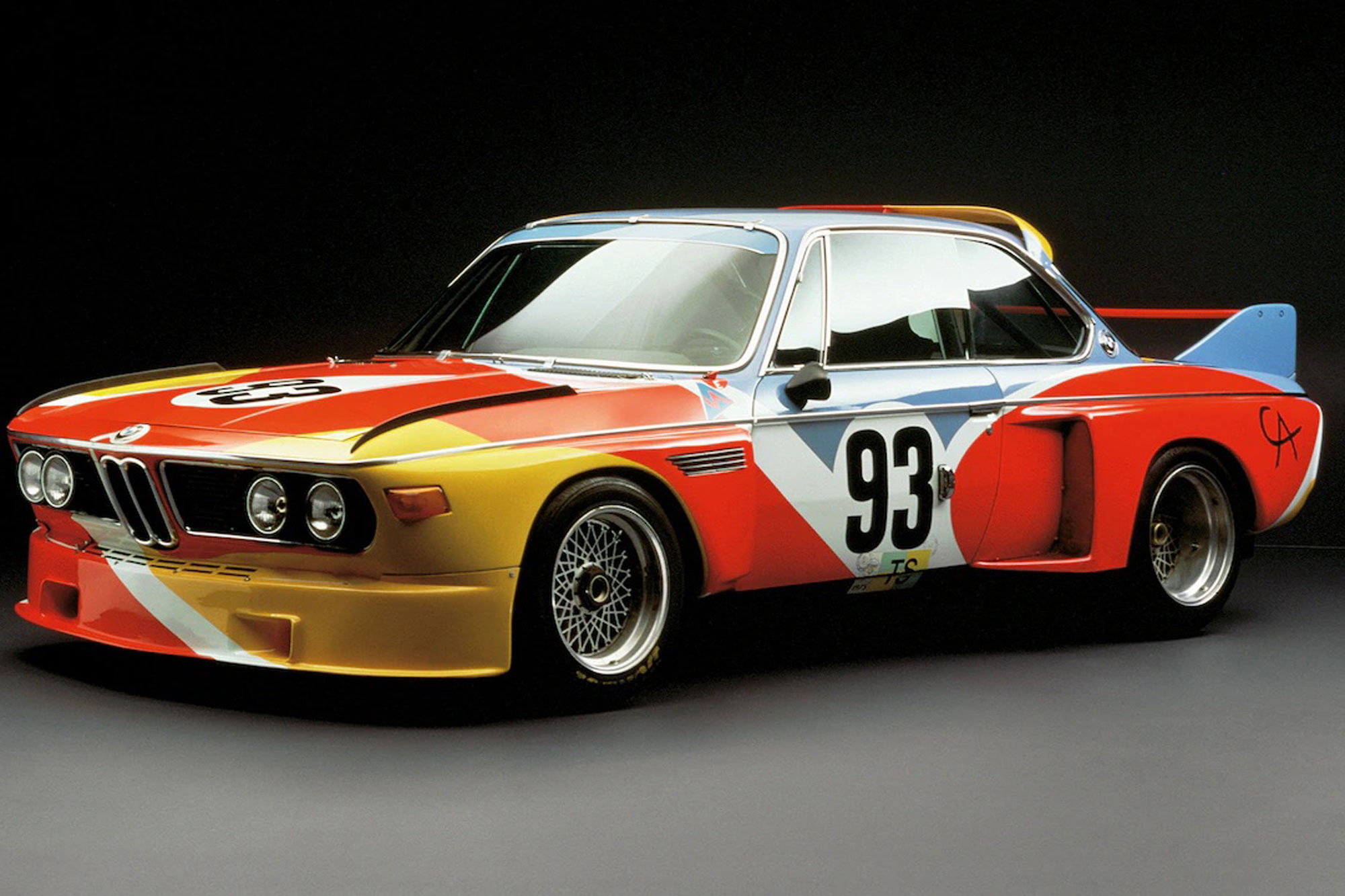 BMW
BMW
Alexander Calder's 3.0 CSL (1975)
The original BMW Art Car embodies Calder's use of lines and colors with a blend of red, white, blue, and yellow accents that neatly integrate the number on the hood and on both doors. His signature appears on the rear wheel arch flare on the driver's side.
While the artist designed the livery using the model car Poulain brought him, the process of painting the coupe itself was outsourced.
 BMW
BMW
Roy Lichtenstein's 320i Turbo (1977)
Pop artist Roy Lichtenstein created the first 3 Series-based Art Car in 1977. As in his famous paintings, Lichtenstein's 320i Turbo featured Ben-Day dots as well as a blend of vivid and darker colors.
The motif seemingly starts on the doors, which each feature a shining sun whose yellow rays extend to the front and rear ends.
 BMW
BMW
Andy Warhol's M1 (1979)
Andy Warhol's M1 stands out as one of the most famous BMW Art Cars.
"I attempted to show speed as a visual image," he said.
Unlike previous artists, Warhol painted the car himself. He finished the project in 28 minutes with about 13 pounds of paint, and he left his signature and his fingerprints on the car's back end.
Poulain's team drove the M1 to sixth place in the 1979 24 Hours of Le Mans.
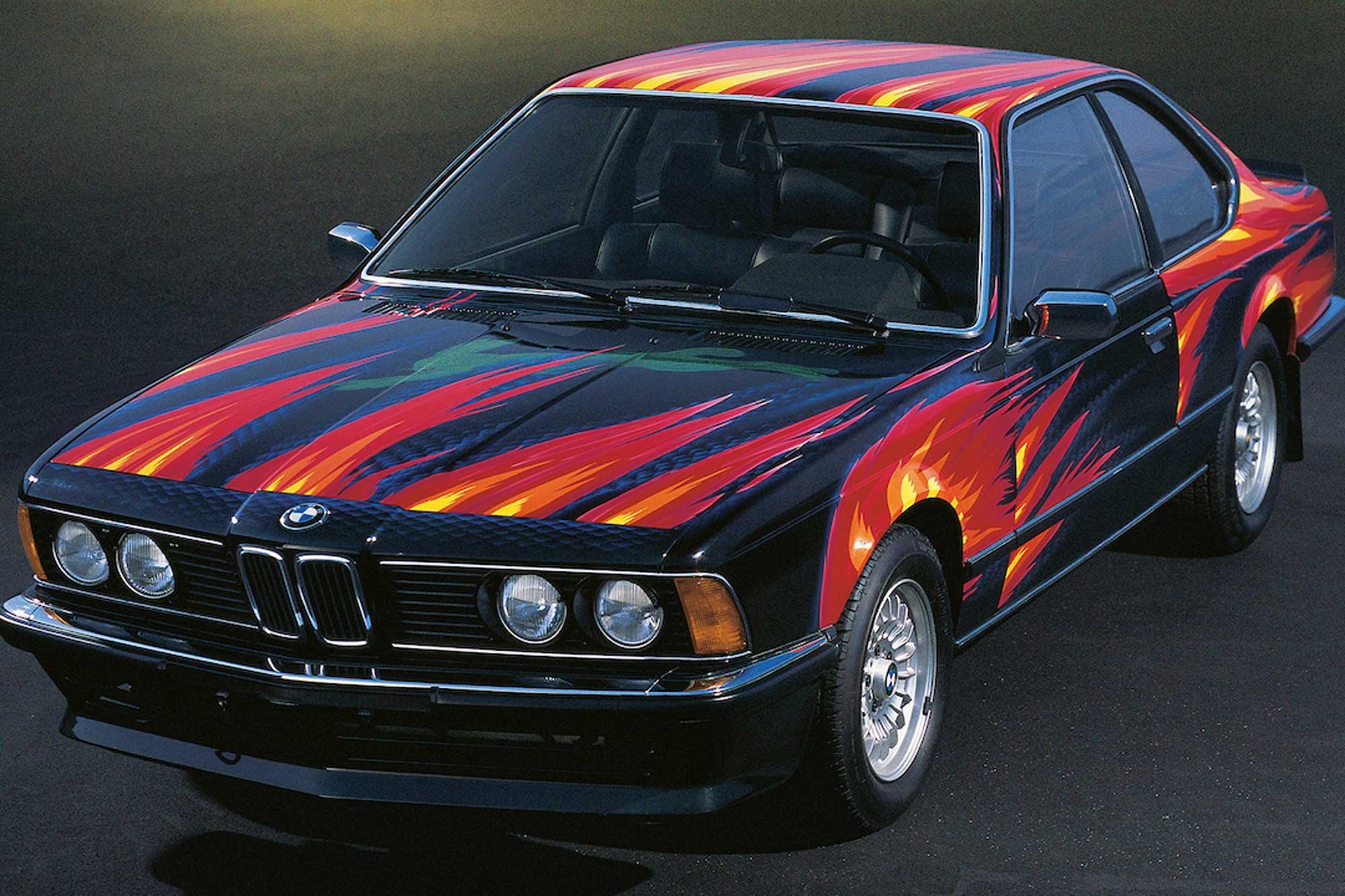 BMW
BMW
Ernst Fuchs' 635 CSi (1982)
Ernst Fuchs imagined fiery foxes (Fuchs means fox in German) pursuing a hare to create the fifth BMW Art Car — the first one not based on a race car. Starting with a 635 CSi finished in black, he added flames to nearly every body panel and painted the outline of a hare on the hood.
The painter's style is recognizable in the flames, but the subject matter is relatively unusual: Fuchs was better known for painting people.
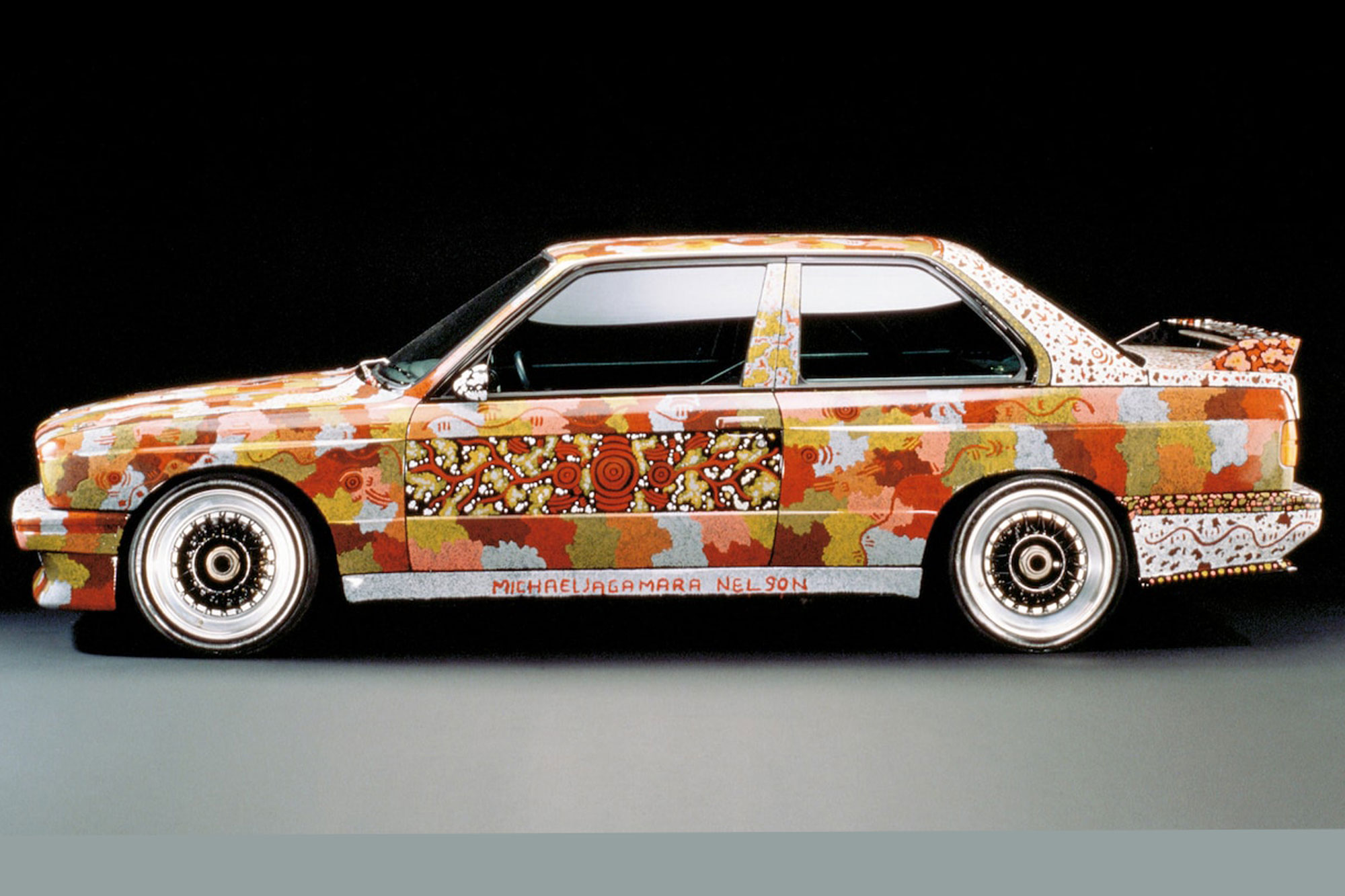 BMW
BMW
Michael Jagamara Nelson's M3 (1989)
Australian artist Michael Jagamara Nelson spent a week creating BMW's seventh Art Car. Starting with a black M3 built for Group A racing, he drew inspiration from aboriginal art and culture to design a livery he described as "a landscape as seen from the plane."
Australian wildlife appears in the livery, including kangaroos and emus, and Nelson's dreams influenced some of the design.
 BMW
BMW
Sandro Chia's M3 GTR (1992)
BMW's Art Cars draw stares — and Sandro Chia's M3 GTR stares back. The Italian artist painted faces on every body panel, including the bumpers, and he added green accents to create contrast.
"This car reflects all those looking and watching," he told BMW.
The M3 GTR competed in several races around the world, but BMW gave Chia an early prototype — it is unknown whether this model ever participated in a race.
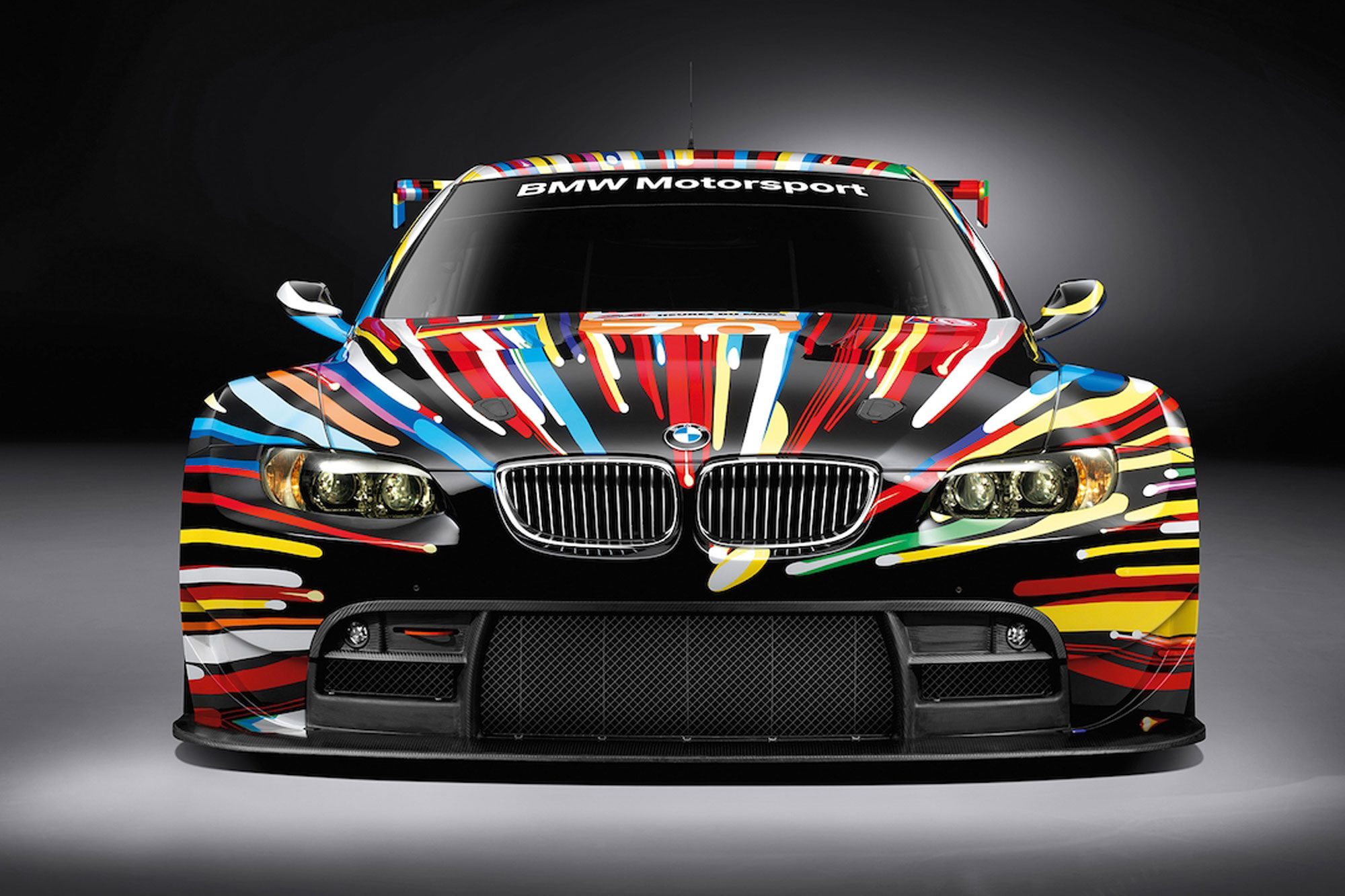 BMW
BMW
Jeff Koons' M3 GT2 (2010)
Jeff Koons created the first M3-based Art Car in nearly 20 years for the 2010 24 Hours of Le Mans. He started with a GT2-specification car, which notably stood out from the regular-production M3 with a wide-body kit, and he chose speed as the theme.
Colorful lines that start at the kidney grilles and flow toward the back of the car make the M3 GT2 look like it's moving quickly even when it's standing still.
Koons and BMW later collaborated on a head-turning, limited-edition version of the M850i xDrive Gran Coupe released for the 2023 model year and priced at $350,000. BMW built 99 units.
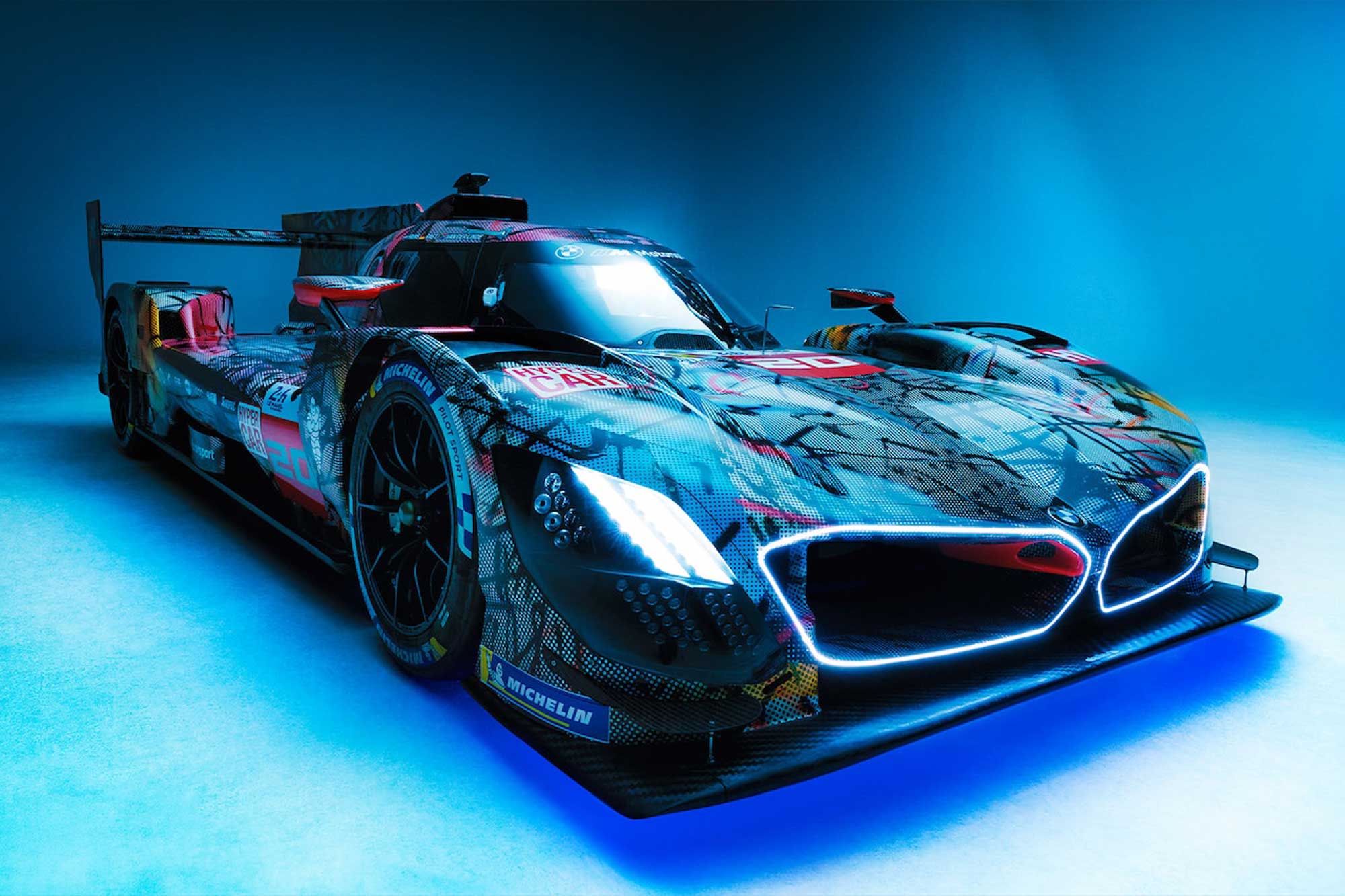 BMW
BMW
Julie Mehretu's M Hybrid V8 (2024)
The latest installment in the art Car series made its debut in the June 2024 edition of the 24 Hours of Le Mans. It was based on the M Hybrid V8, a prototype-class race car unveiled in 2022 to compete in endurance-racing events across the globe, and it was painted by Julie Mehretu.
All vehicle pricing includes MSRP plus destination charges (set at the time of publication), and will be rounded to the nearest thousand.
Written by humans.
Edited by humans.
 Ronan Glon
Ronan GlonRonan Glon is an American journalist and automotive historian based in France. He enjoys working on old cars and spending time outdoors seeking out his next project car.
Related articles
View more related articles